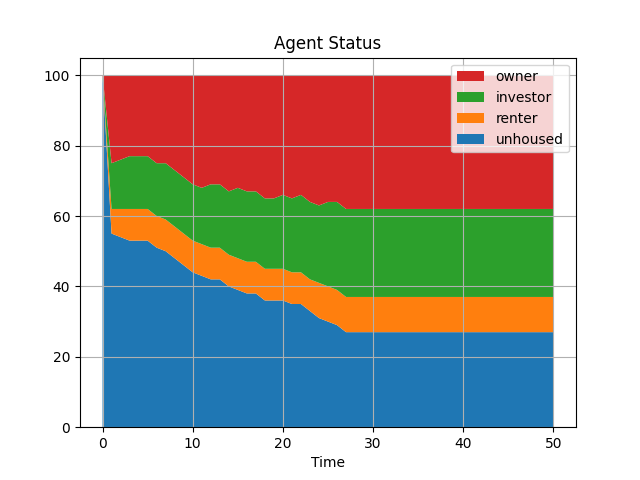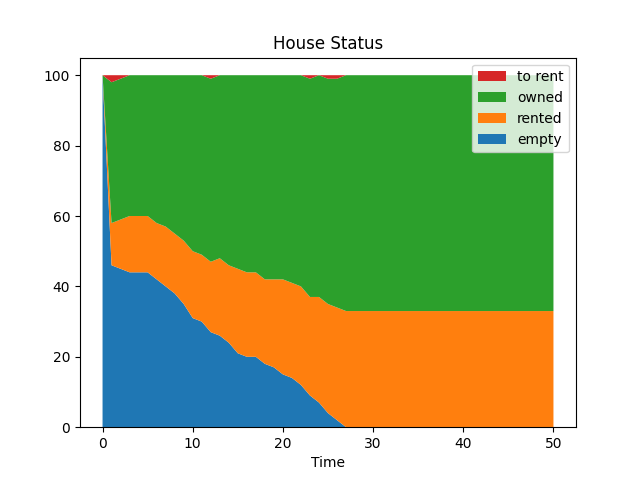Another Simple Market
Part II: Some improvements later...
The earlier results of the simulation seemed quite odd. There seems to be too little variation over time, especially if one compares the results to those of Labadie
Figure $1$: Evolution of agent status in the previous post.. Despite the ten period time horizon, a large share of agents remain homeless, a result that is widely different from Labadie and maybe the major factor explaining the difference is that I chose not to use any agent-based modelling module. This might affect the sophistication and the accuracy of the algorithms. Additionally, further investigations into the problem reveals an interesting characteristic of the simulation, a sizeable share of homes remained empty. The agents were ignoring most houses due to a misplaced break statement.
Improvements
There were issues in the assignment of statuses to agents based on their market position. The agents were not always accurately updating their statuses and thus many remained ‘unhoused’ on paper. The data collection process was also malfunctioning. The status of the different agents in Figure $1$ did not change much after the second period.

After the improvements in the code, a sizeable but smaller share of agents remain homeless the whole time. This persistent homelessness might be due to the parameters of the housing market. The average rent is half the size of the average income but the agents are not always willing to spend such a high amount on rent. The budget allocated to housing varies between $20$% to $60$% of income and rent prices are much more concentrated around their mean than the incomes of agents. However, there remains irregularities in the results. One can see that the share of houses that are rented is much larger than the number of agent that are said to rent a house. This situation requires further investigation.

The time horizon was also extended to $50$ periods to better capture the long-term behavior of the simulated variables. One can now observe that, in the current market conditions, the homelessness rate stabilizes at a much lower level than previously (around $30$%) while all houses are already bought up by the $30$th period. Most houses have owner-tenants but around $40$% of the houses have tenants.
Recommendations
The simulation could possibly be improved by choosing parameter values that are much more realistic. In this article and the previous one, the values were chosen to match those of Labadie and allow for easier comparison.